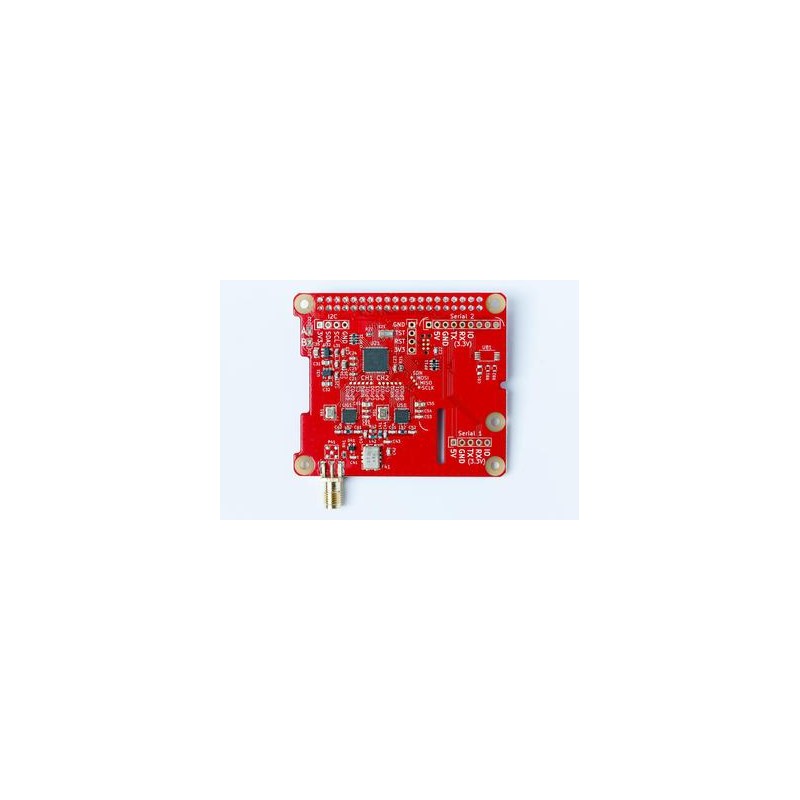

No products in the cart.


The dAISy HAT is the perfect AIS receiver for your Raspberry Pi projects and embedded applications. This two channel marine AIS receiver works great with OpenCPN, Kplex and other software that accepts serial data input. It is also well suited for reporting local ship traffic to services like MarineTraffic.
The dAISy HAT is the perfect AIS receiver for your Raspberry Pi projects and embedded applications. This two channel marine AIS receiver works great with OpenCPN, Kplex and other software that accepts serial data input. It is also well suited for reporting local ship traffic to services like MarineTraffic.
For a less geeky alternative, also check out our single channel AIS Receiver with USB connectivity.
Note: On the Raspberry Pi 3, UART0 is occupied by the built-in Bluetooth radio. Bluetooth may not be available when using the dAISy HAT.
OpenCPN, an open source chart plotter and navigation software, can be used with receivers like dAISy to track ships on a map. Any software running on the Raspberry Pi that accepts AIS data from a serial input will work with dAISy.
Several of our customers built chart plotters based on Raspberry Pi, OpenCPN and dAISy. A detailed step-by-step recipe can be found here.
With Kplex the Raspberry Pi can be setup as a NMEA server that distributes AIS to other devices on your network, like for example via WiFi to a navigation app running on an iPad or Android tablet.
Disclaimer: WE DO NOT RECOMMEND to rely solely on dAISy for navigation and collision avoidance!
The dAISy HAT is well suited to report nearby ship traffic to AIS tracking websites and services like MarineTraffic, FleetMon, AISHub or Pocket Mariner.
The easiest approach is to use dAISy with Kplex. Kplex is a NMEA-0183 Multiplexer which allows to feed the AIS data stream to multiple targets, including services like MarineTraffic and AISHub.
Advanced users of can use a few lines of Python or even basic Linux commands to directly submit the serial output of dAISy to AIS tracking services.
The dAISy HAT includes convenient breakout pads to access the AIS data stream. With a bit of soldering, advanced users can combine dAISy with a Bluetooth module to receive AIS on wireless devices, connect a data logger like SparkFun OpenLog, or any other device that can process serial data.
The dAISy HAT also works without a Raspberry Pi when powered through the broken out 5V or 3.3V pads. Use the serial breakout pads to connect it with a TTL serial-to-USB cable, Bluetooth module or other devices.
With our open source work, we pioneered a new category of AIS receivers designed around the SiLabs EZRadioPro single chip radio IC. This architecture is instrumental for the very low price, small form factor and low power consumption. The trade-offs are longer acquisition time, lower sensitivity and less range than some traditional AIS receivers.
Field tests with conventional dual-channel AIS receivers showed, that under good conditions the dAISy HAT can be on par with some models (e.g. SmartRadio SR162) while still being outperformed by others (e.g. advanSEA RX-100). However dAISy clearly outperforms all sub-$100 receivers that we have tested so far (Quark-elec, MarineGadget).
Our observation is, that with a good antenna dAISy is well suited to monitor local ship traffic. If you need maximum performance and are willing to pay for it, go with a receiver from the established brands.